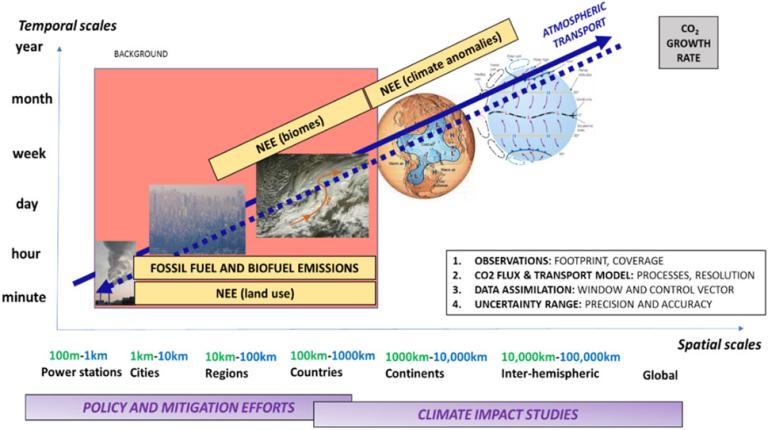R&D Needs
A strong research component is required to continuously support and improve the operational infrastructure. All elements of the G3W for atmosphere, ocean, land, and space-based segments need research and plans for integration. G3W itself builds on mature research, but there are many open scientific questions that need to be addressed to tackle limitations and uncertainty of the current systems and support their development. Understanding GHG processes and cycles and their description and representation in the ESMs, across spatial and temporal scales is an actively developing research area
Model development work is underway in many centres around the world and targeted research that can feed into operational processes (e.g. transport and dispersion in the planetary boundary layer) is required. In a further step, emphasis should be given on the interaction between air quality and GHG processes feedback, use of isotopes and ancillary tracers to partition source sectors, and the whole Earth System, supporting mitigation strategies for climate and health.
Given the need for a massive upscale of the observational infrastructure, research can play a critical role in developing and testing new measurement techniques. It can help with the network design processes given existing and emerging observational capabilities. Reducing the required maintenance, cost and improving the quality of the observations will be critical. Engagement of the research networks into the operational activities can also be an important step towards improved sustainability. The research community has to play an important role in developing and testing prior inventory products, process-based flux models and provide guidance on the techniques that can be used for the sources/sinks identification. Data processing is also an important area for future research, including machine-learning techniques and other artificial intelligence (AI) methodologies.

Action R1: Establish G3W Research to Operation (R2O) Task Team within the Research Board.
The activities include developing Terms of Reference for the Task Team, establishing working and reporting mechanisms, ensuring representation in the G3W technical coordination group, and developing an integrated research strategy. Success will be measured by the establishment of the task team and the presentation of the strategy to the Research Board.
Action R2: Advance observations and data exchange capabilities.
The activities include developing automated NRT data evaluation tools using ML/AI, updating RRR activities, evaluating emerging measurement techniques, and expanding G3W's gas portfolio. Success will be measured by the publication of guidance statements, measurement technology reports, and the development of automated QA/QC tools.
Action R3: Advance GHG modelling and flux inversion capabilities.
The activities include research on improving Earth system models, evaluating inversion techniques, characterizing posterior covariances, evaluating initialization methods, reconciling emission estimates, implementing top-down/bottom-up comparisons, developing uncertainty metrics, supporting model intercomparisons, enhancing source attribution, exploring ML/AI approaches, identifying systematic errors, prototyping GHG reanalysis, developing multi-model weighting methods, and advancing high-resolution modeling. Success will be measured by research outputs that can be implemented in operational systems.

Temporal and spatial scales of CO2 monitoring from plumes to global CO2 growth rate (from Balsamo et al., 2021)
The description of these blocks is based on the G3W implementation plan. This document, approved at the 78th WMO Executive Council, prevails.
